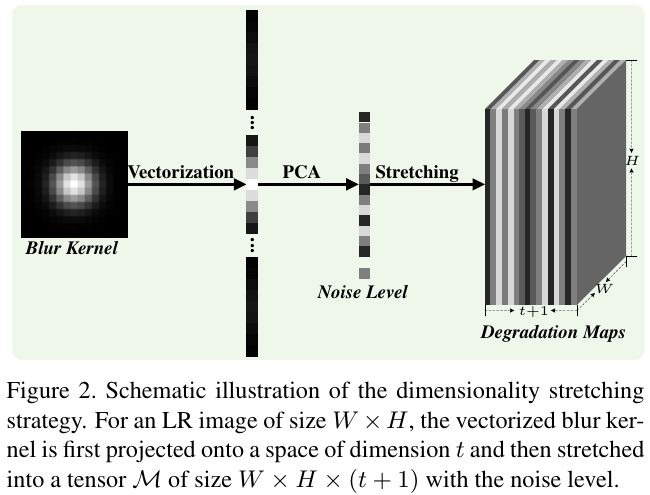Zhang K, Zuo W, Zhang L. Learning a single convolutional super-resolution network for multiple degradations[C]//IEEE Conference on Computer Vision and Pattern Recognition. 2018, 6.
1. Overview
1.1. Motivation
- existing SR methods assume bicubicly downsample
- accurate blur kernel increases good performance, mismatch blur kernel decrease performance

In this paper
- take two keys factors as input. blur kernel, noise level
- proposed dimensionality stretching strategy
- training. different combinations of blur kernels and noise levels
- testing. select the best fitted degradation model rather than bicubic
1.2. Related Works
- SRCNN
- VDSR
- LapSRN
- SRGAN
1.3. Degradation Model

1.3.1. Blur Kernel
- the influence of an accurate blur kernel is much larger than that of sophisticated image priors
- smoother kernel→ over smoothed
- sharper kernel→ ringing artifacts
1.3.2. Noise
- directly SR with noise removal will amplify the noise
- denoising pre-processing loses detail information, jointly better
2. Methods
2.1. MAP Problem

2.2. Dimensionality Stretching

- blur kernel. pxp→ p^2x1→ tx1→ h x w x t
- noise. σx1→ tx1→ h x w x 1
- concat. h x w x (t+1)
2.3. Network

- pixelShuffle
2.4. Loss Function

3. Experiments
3.1. Comparison


3.2. Inference
- for real images, use grid search strategy rather than adopting any blur kernel or noise level estimation methods